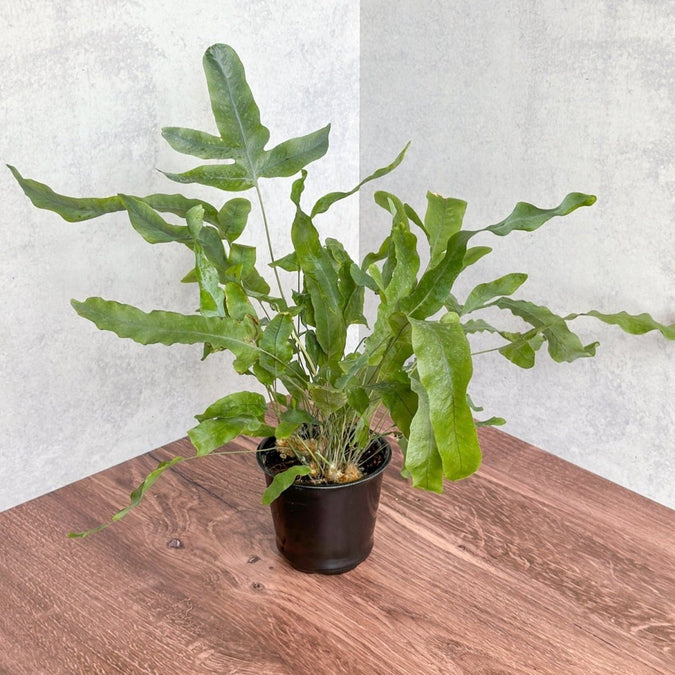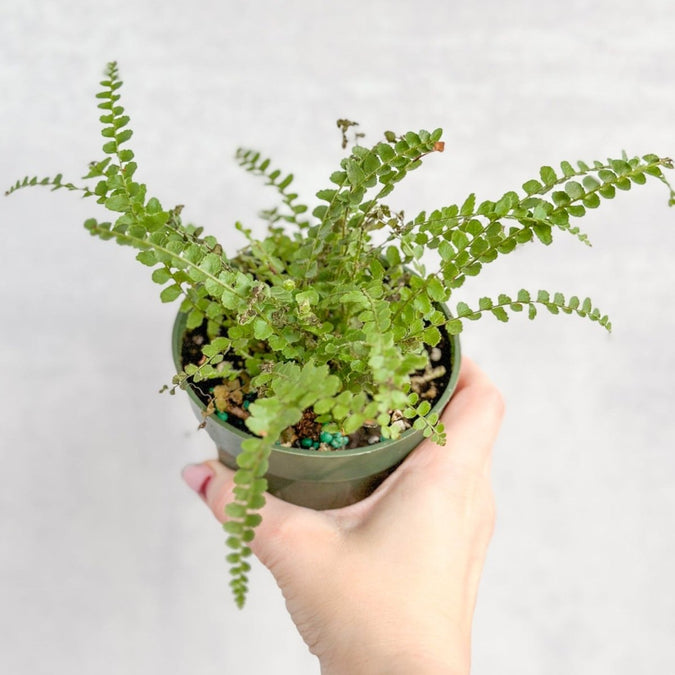Why Ferns Make Fantastic Houseplants
Indoor ferns add an instant touch of greenery to any room, giving off those “enchanted forest” vibes without requiring a magic wand. With their delicate fronds and lush appearance, ferns might look fragile, but they can be surprisingly hardy—if you give them what they need. Here’s a guide to keeping your ferns happy, healthy, and far from frumpy.

Light Requirements for Ferns: Let There Be (Filtered) Light
Ferns love bright, indirect light. You know that soft, filtered sunlight you’d find under a canopy of trees? That’s what they crave. Direct sunlight, on the other hand, will turn those lovely fronds into crispy critters faster than you can say “sunburn.” If you're struggling to hone in on the perfect light, we recommend using a grow light like the ones we use in the shop. Our favorite is the LED Vita Light found here.
Tip: If you notice the tips of your fern turning brown, it might be getting too much direct light. Move it a little farther from the window or give it a sheer curtain as a shield.
Watering Your Fern: Moist, Not Drenched
Ferns love moisture, but there’s a fine line between “just right” and “Oops, I drowned it.” The soil should stay consistently moist, but not soggy. A good rule of thumb? If the top inch of soil feels dry, it’s time to water. If your fern is starting to look like it’s auditioning for a desert survival show (dry, brown leaves), it’s probably thirsty.
Humorous Insight: Think of your fern like a guest who enjoys a drink but hates being the life of the pool party. Keep it hydrated, but don’t go overboard.

Soil for Indoor Ferns: The Right Mix
Ferns prefer well-draining soil that holds onto moisture but doesn’t stay waterlogged. A peat-based potting mix works great, and you can add some perlite or sand to ensure proper drainage.
Pro Tip: Ferns aren’t big fans of "wet feet." Make sure your pot has good drainage holes—otherwise, your fern might start singing the blues, leaf by leaf.

Temperature & Humidity: Keep it Cozy
Ferns are tropical by nature, so they like things warm and humid. Ideal temperatures range from 65°F to 75°F. If you live in a dry area (or are cranking up the AC), consider placing a humidifier nearby or setting the plant on a pebble tray filled with water.
Ferns’ Complaint: “Why does it feel like the Sahara in here?” If your fern could talk, that’s what it would say when placed in a low-humidity environment.
Fertilizing Indoor Ferns: Feed Me, But Not Too Much
Indoor ferns aren’t heavy feeders, but they do appreciate a little nutrient boost during the growing season (spring and summer). A balanced, water-soluble fertilizer every 4-6 weeks should do the trick. In the fall and winter, when growth slows, you can skip feeding altogether—ferns aren’t big fans of winter meals.
When we're fertilizing the ferns in our shop, we like using a balanced plant food such as Grow Concentrate from We The Wild. It provides all the nutrients our ferns need to thrive!

Common Indoor Fern Problems (And How to Solve Them)
Yellowing Leaves? You’re probably overwatering, and your fern is throwing a fit. Ease up on the H2O.
Crispy Tips? Too much direct sunlight or not enough humidity.
Stunted Growth? Time to fertilize! A little snack in the growing months can make a big difference.
Ferns and Winter: Keep Them Cozy
Ferns can struggle a bit during winter, especially if the air gets too dry. Keep the humidity levels up, water a little less frequently, and make sure they’re still getting enough indirect light. Consider moving them to a spot with consistent warmth and light but away from drafty windows or heating vents.

Repotting and Propagating Ferns
Ferns don’t need frequent repotting, but if you notice roots peeking out of the drainage holes, it might be time to give your fern a little more legroom. Spring is the best time to repot. When propagating, division is the easiest method—just separate the root clumps and pot them in fresh soil.
Conclusion: Your New Fern Friends
With a little attention to light, water, and humidity, your indoor fern will flourish and add a touch of the rainforest to your space. And remember—while ferns love moisture, they’re not fans of drowning! Keep the care balanced, and you’ll enjoy your fern’s green, graceful presence for years to come.
















